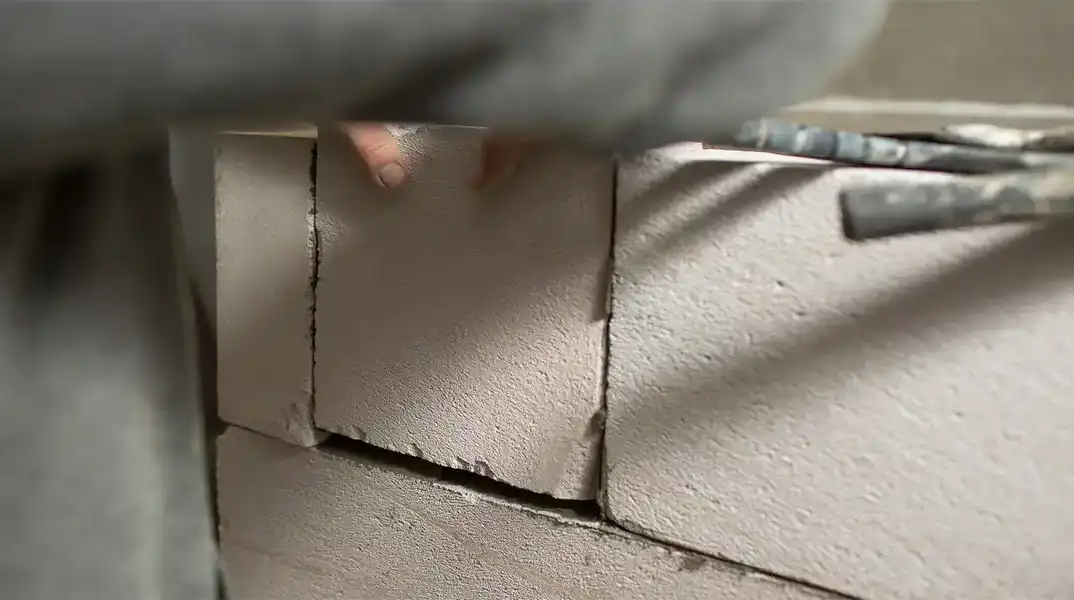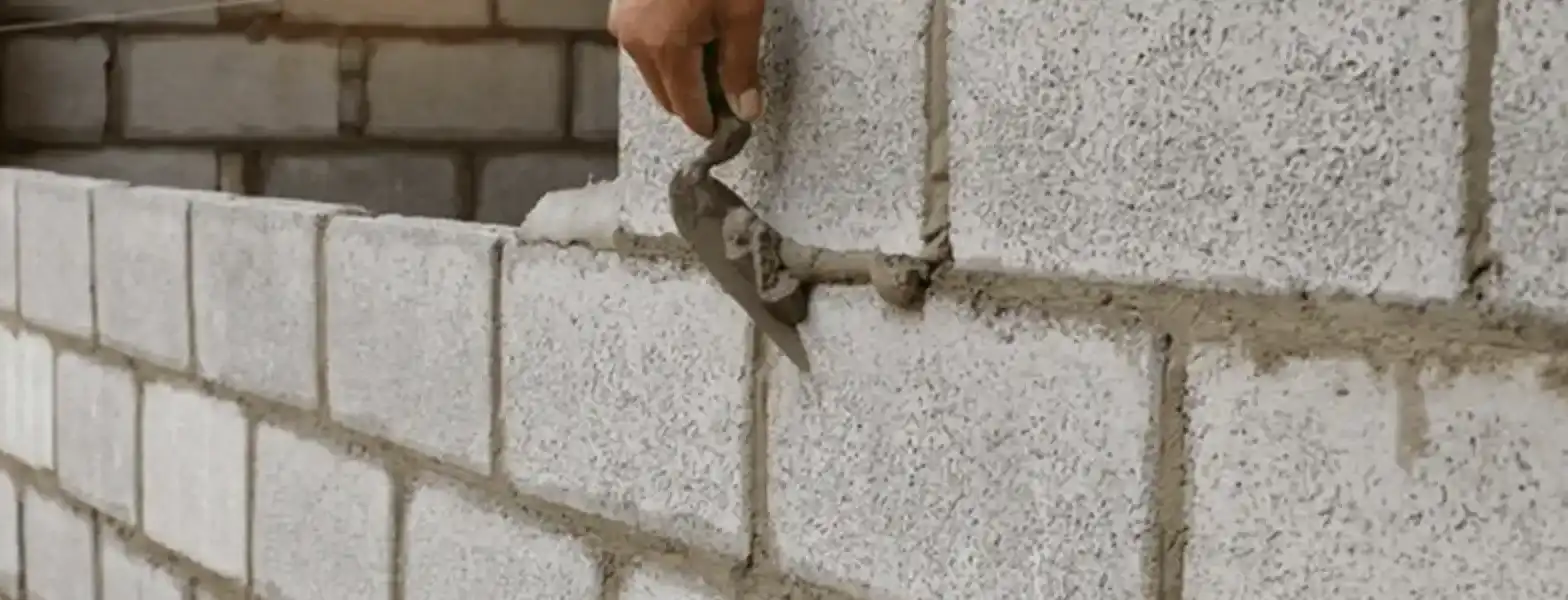
The construction industry is continuously evolving, and using concrete blocks as an alternative to traditional bricks has gained momentum. Concrete blocks, also known as concrete masonry units (CMUs), offer many advantages, which we will address in this article.
What Is A Concrete Block?

A concrete block, also known as a cement block, is a building unit made of concrete primarily used in wall construction. These blocks come in various sizes, mainly 4-inch, 6-inch, and 8-inch. Concrete blocks are staked together and joined with mortar consisting of cement, sand, and water.
What Is A Brick?

Bricks are a common construction material, particularly for walls and pavements. They are typically rectangular and made from clay, sand, cement, or other chemically cured materials.
Bricks can be classified into various types, such as burnt clay bricks and concrete bricks, among others. They are laid in courses and joined using adhesive.
What are the Differences Between Concrete Blocks and Bricks?
| |
Concrete Block
|
Brick
|
|
Strength and Durability
|
Concrete block's exceptional strength and durability make them an excellent choice for construction. They are manufactured using high-strength concrete. They are built in such a way that they can resist harsh weather conditions and seismic forces without compromising their structural integrity.
|
Though traditional bricks are strong and long-lasting in their own terms, they are made of clay and, thus, weather with time and break under a harsh load.
|
|
Cost Efficiency
|
Due to their larger size and uniformity, a large surface area can be covered with fewer concrete blocks, making it cost-efficient in both materials and labour.
|
Mud bricks are smaller in size and undergo a tedious manufacturing process, making them expensive in comparison. Labour costs are proportionately high.
|
|
Faster Construction
|
Since concrete blocks are larger, they cover more area per unit, and builders can complete projects more quickly, reducing the time taken to build and reaching the deadline as soon as possible.
|
The mud bricks are smaller, almost half the size of a standard concrete block. The time taken to build and the cost of the labour is longer than that of the concrete block structures.
|
|
Better Insulation
|
Concrete blocks offer more thermal and sound insulation than traditional bricks. The presence of hollow cores inside the block and its dense structure make it possible for them to be natural insulators and great soundproofing materials.
|
Bricks require excessive air conditioning and cooling to provide the same amount of thermal insulation, and they are not dense enough to provide sound insulation. Thus, using bricks in commercial places is always a bad idea.
|
|
Design Versatility
|
Concrete blocks are manufactured in various designs, shapes, and colours, providing architects with an unparalleled range of options. They are aesthetically pleasing and can also contain intricate detailing.
|
To date, bricks are made of red mud and sun-baked. They are typically made in a standard measurement and colour and are not versatile.
|
|
Fire Resistance
|
Concrete blocks provide an essential safety aspect to buildings because they are non-combustible and highly fire-resistant.
|
Bricks must ideally not be used in fire-prone areas, as they quickly tend to catch on fire. However, they are not fire resistant because they are baked to harden.
|
|
Environmentally Friendly
|
Locally sourced materials are used to make concrete blocks, thus greatly reducing transportation emissions. Moreover, sustainability is given the utmost importance, and recycled products are used as and when possible.
|
Considering that bricks are typically made of mud, which is naturally occurring and scarcely available, it is not advisable to use mud bricks.
|
|
Low Maintenance
|
Concrete blocks are resistant to pests, mold, rot, and rust. Thus, they assure longevity and require minimal maintenance, which also means the maintenance cost is much lower.
|
Bricks easily absorb moisture and start to form mold, and the threats to attract pests are constant, irrespective of the duration of the brick used. In comparison, the maintenance is higher.
|
Now that we have understood the difference between concrete blocks and bricks, let's find out why concrete blocks are preferred over red bricks.
Why Are Concrete Blocks Preferred Over Red Bricks?
Concrete blocks are preferred over red bricks for the reasons discussed below.
Strength: Concrete blocks have higher compressive and tensile strengths than red bricks. This makes them more suitable for high-rise buildings that require increased load-bearing capacity.
Cost: Concrete blocks require less mortar and plaster than red bricks, which can lead to significant cost savings in construction.
Durability and Longevity: Concrete blocks are more resistant to weathering and breaking during transportation, making them a more durable and long-lasting choice.
Sound Insulation: Concrete blocks offer excellent acoustic performance, reducing noise pollution in urban areas.
Environmental Impact: Concrete blocks are less environmentally damaging than brick production, which involves topsoil depletion and higher carbon emissions.
Ease of Use: Concrete blocks are machine-made, reducing the likelihood of defective products and allowing for more precise sizing and shape than red bricks.
However, concrete blocks and red brick have advantages, including superior strength, cost-effectiveness, and durability, making them a preferred choice for many construction projects.
Conclusion

Concrete blocks have emerged as everyone’s go-to building material, offering multiple advantages, especially when compared to traditional bricks. They are revolutionizing the construction industry because of their exceptional strength and durability, cost-effectiveness, design versatility, environmental friendliness, insulation properties, soundproof properties, and fire resistance.
Whether used in residential, commercial, or industrial projects, concrete blocks provide a solid foundation for buildings that can assure stability and withstand time despite the evident environmental challenges. By embracing concrete blocks, builders and developers pave the way for a stronger, more sustainable, and more resilient future in construction.
FAQs-
1. Are concrete Blocks better than bricks?
Yes, concrete blocks are stronger and more durable than bricks, offering better fire resistance and lower maintenance. Bricks are favoured for their aesthetic appeal and insulation properties, making a choice dependent on specific project needs.
2. What is the measurement of a concrete brick?
The standard sizes for most concrete blocks are (L x H x W): 6 inches (16 x 8 x 6 inches)
3. How do you calculate the number of bricks required in construction?
You can consult your supplier for this information or check the Alpha Sands website to calculate the number of concrete blocks according to the wall's measurements.